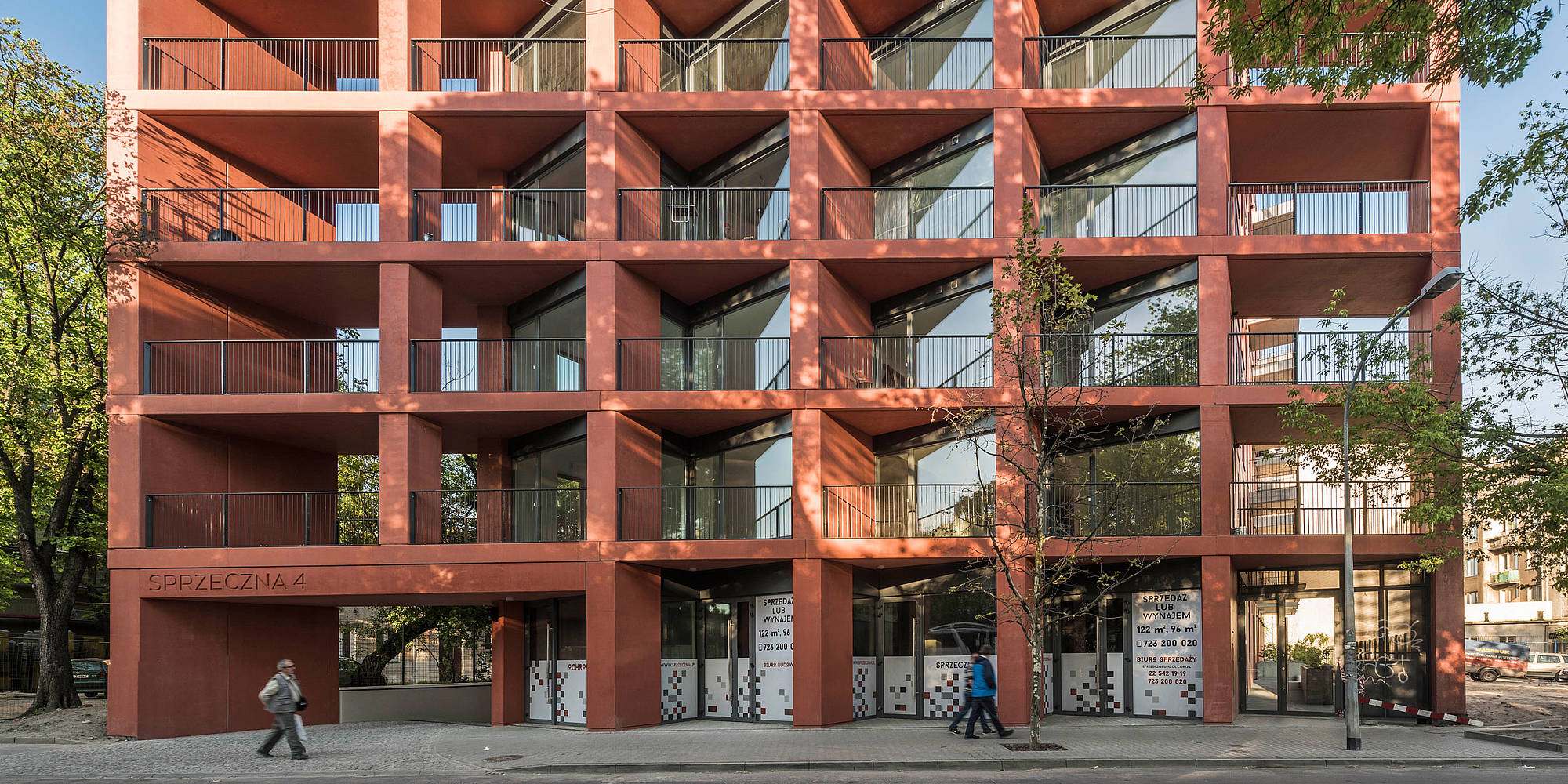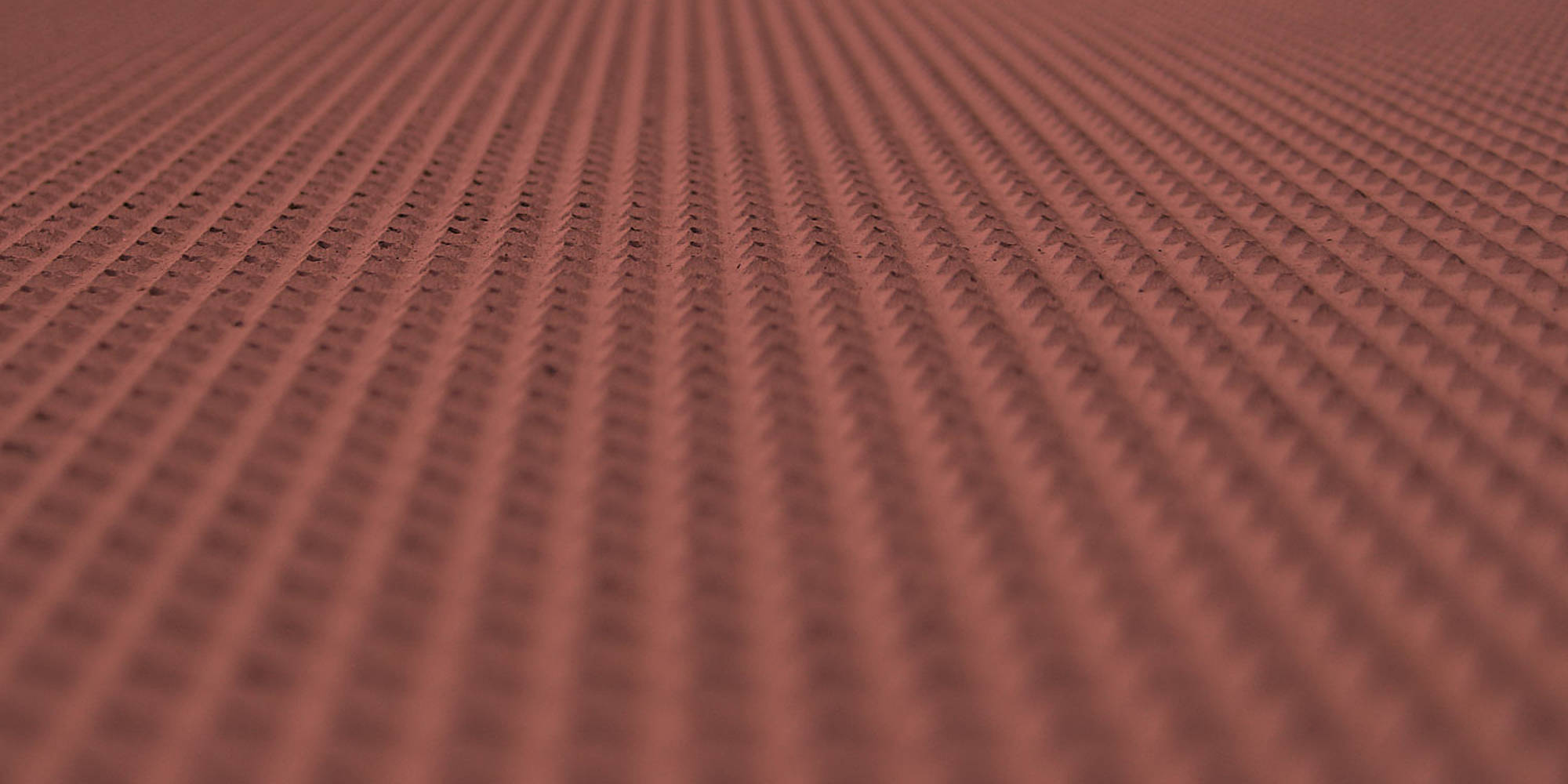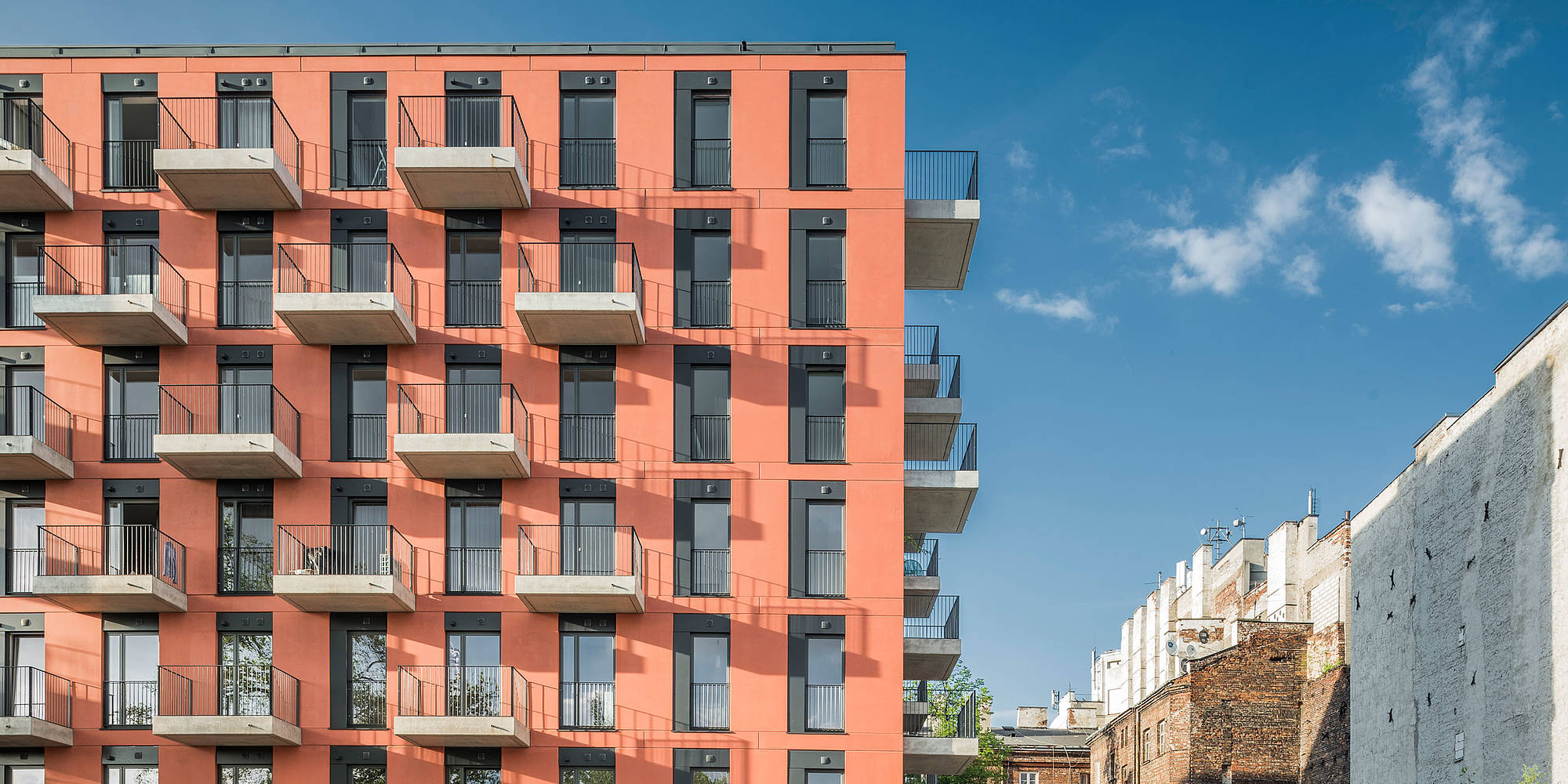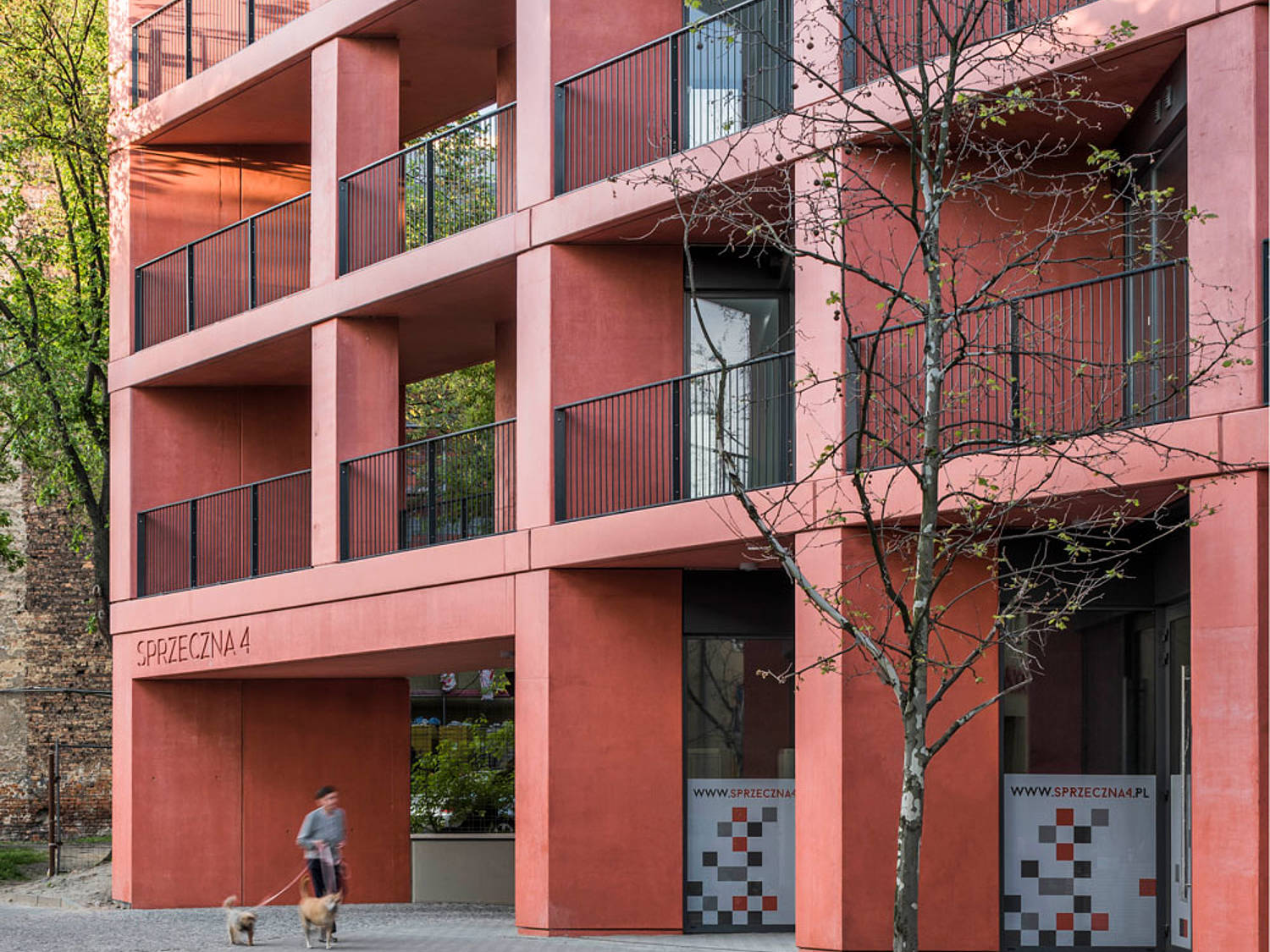Apartment house "Sprzeczna 4", Warsaw, Poland
A residential building in Warsaw draws attention with its color and sophisticated play of light. But the building is also a sign of change in the Polish construction industry.
Praga is one of the oldest districts of Warsaw. Located east of the Vistula, the district is characterized by its historic brick buildings, which were largely spared from devastation during the Second World War. The city administration attaches great importance to preserving the historical character of the district and approves very few densification projects.
The residential building Sprzeczna 4 is one of these projects. Situated on a narrow plot next to a residential building with a historic stone façade, it signals modernity with its red exposed-concrete façade, while at the same time being integrated in its surroundings. “The building at Sprzeczna 4 aspires to continue the restoration of the Praga district and to become a recognizable element not only in the immediate vicinity, but also on a larger scale,” said the architects of the Polish firm BBGK regarding their project.
The building, which was completed in 2017, faces the street with an open façade, into which the balconies are embedded. The building thus preserves the smooth façade character of the surrounding buildings. The sides of the balconies also offer the inhabitants protection against the elements.



Behind the balconies is a staggered and surprisingly deep building, wrapped all around in a bright red façade of precast elements. On the ground floor, the façade is adorned with logos and graphics; above this, the façade appears smooth at first glance. But on closer inspection it becomes clear that the precast concrete elements are delicately designed with a special structure. BBGK chose an anti-slip formliner from RECKLI for the barely perceptible structuring of the concrete façade. Anti-slip formliners are typically used on floors to achieve non-slip concrete surfaces. RECKLI Antislip guarantees class R13 slip resistance. This is ensured by extremely fine pyramidal elevations, which are stamped into the concrete surface with the aid of the formliner. “The architects chose this structure to break up the light on the concrete elements,” explained Andrzej Wójcik, who is responsible for RECKLI representation in Poland.
The fine structure allows a soft play of light to be achieved on the façade surface. This effect can also mask minor imperfections in the concrete. Smooth exposed concrete surfaces highlight any minor blemish, such as minimal discrepancies in the color of the concrete or air bubbles generated during casting. The inconspicuous structuring elegantly helps the eye pass over any visual differences that may occur.
The architects purchased 39 square meters of formliners, which were placed in the formwork at the Budizol plant in Poland during the casting of the concrete elements. “The building has gained a lot of popularity in Poland, because it is completely made up of precast elements,” said Wójcik. As in the GDR, precast construction became a symbol of communist architecture in Poland: “This precast concrete was of low quality and looked very bad. To this day, many of these residential buildings can be found all over Poland.” That is why after the end of communism, new buildings were created predominantly by means of on-site concrete processing. Just a few years ago, architects and construction companies started trusting the precast construction method again but had to overcome prejudices. “Sprzeczna 4 is a symbol of modern Polish architecture and marks the comeback of the precast industry,” says Wójcik.
The architects describe their building as a “manifesto for precast construction.” BBGK deliberately opted for prefabricated construction, whose reputation has suffered enormously from uninspired architecture during communism. For BBGK it was about much more than time and cost advantages. Sprzeczna 4 self-confidently opposes the image of precast construction in Poland and provides proof of modern, aesthetic construction.
